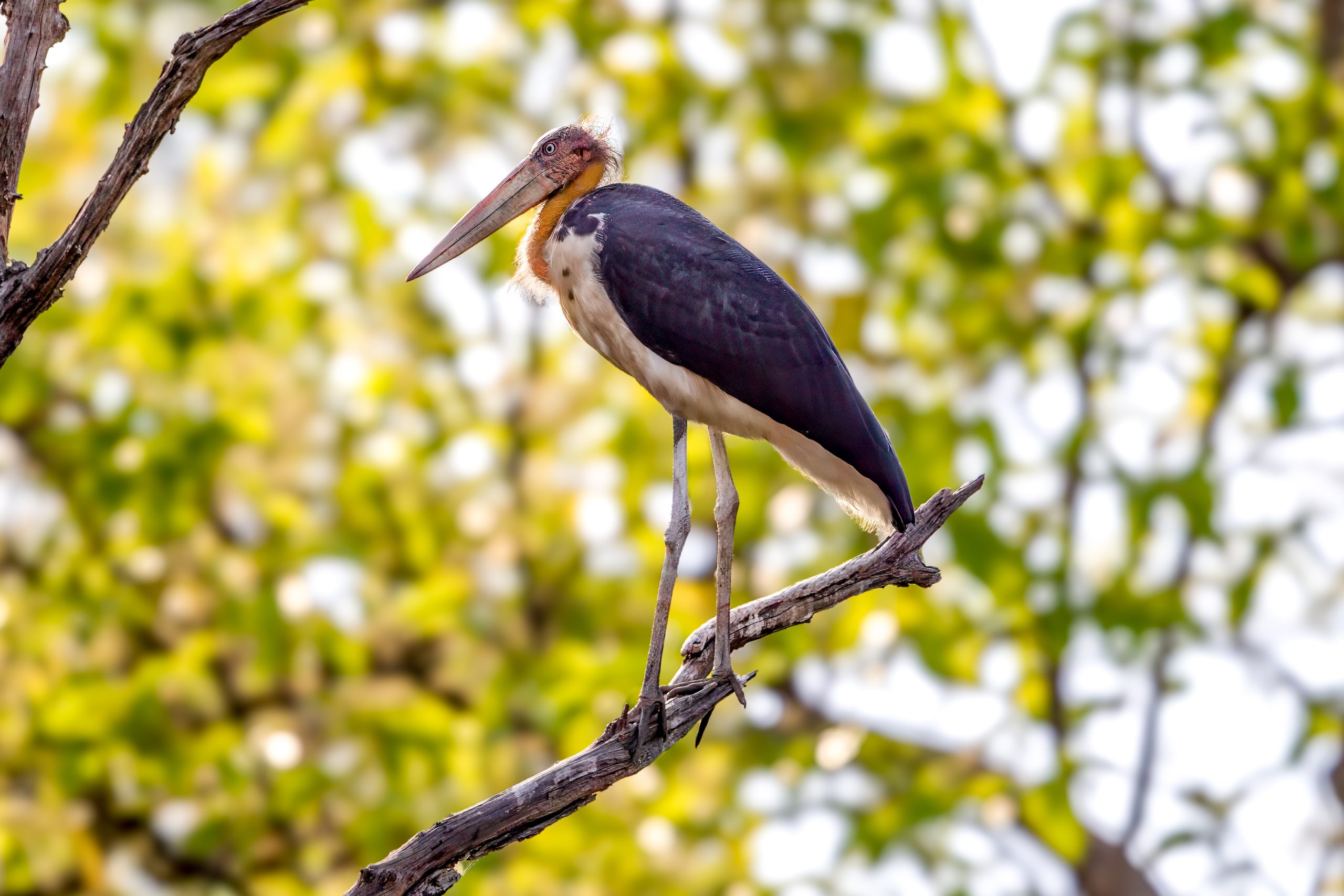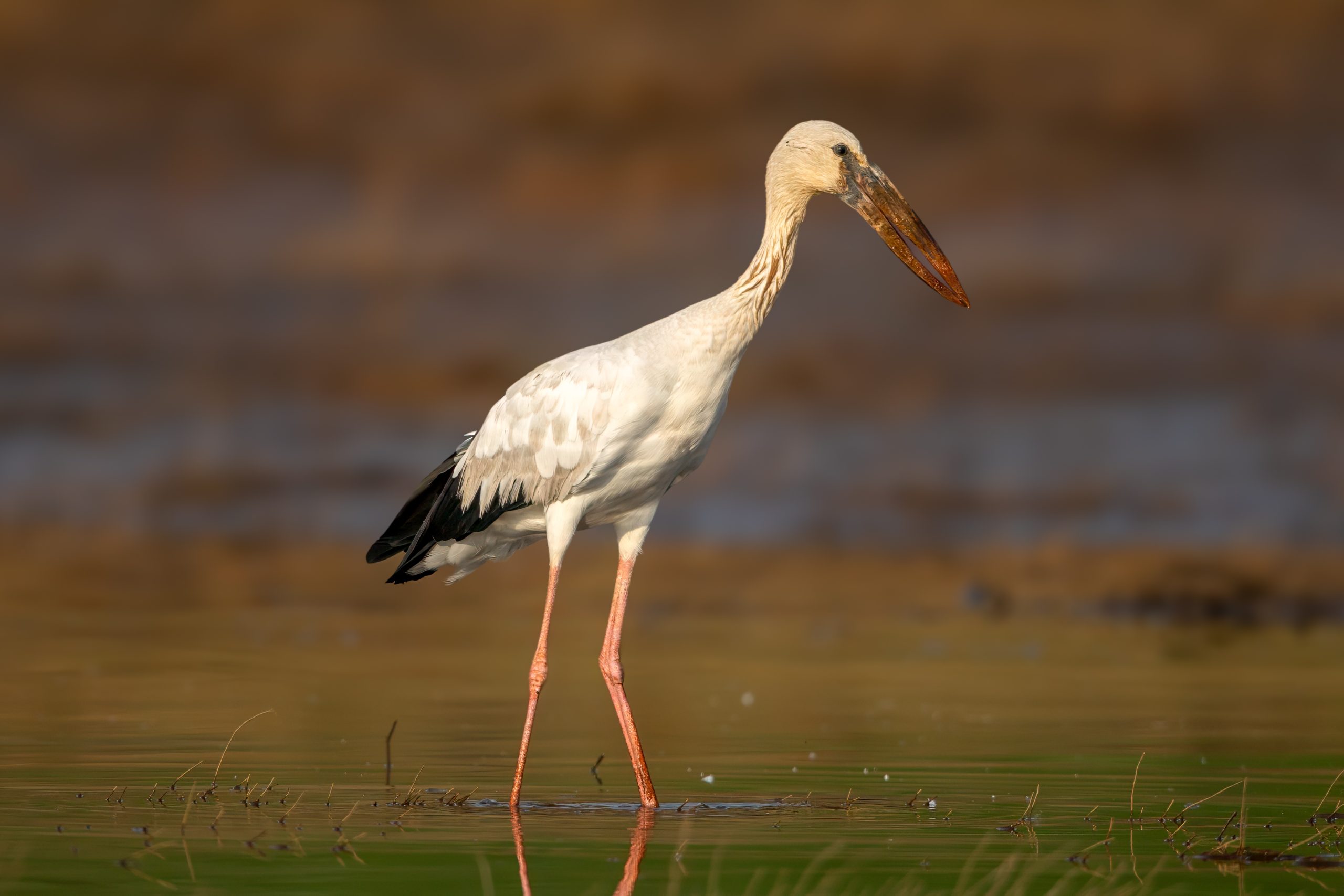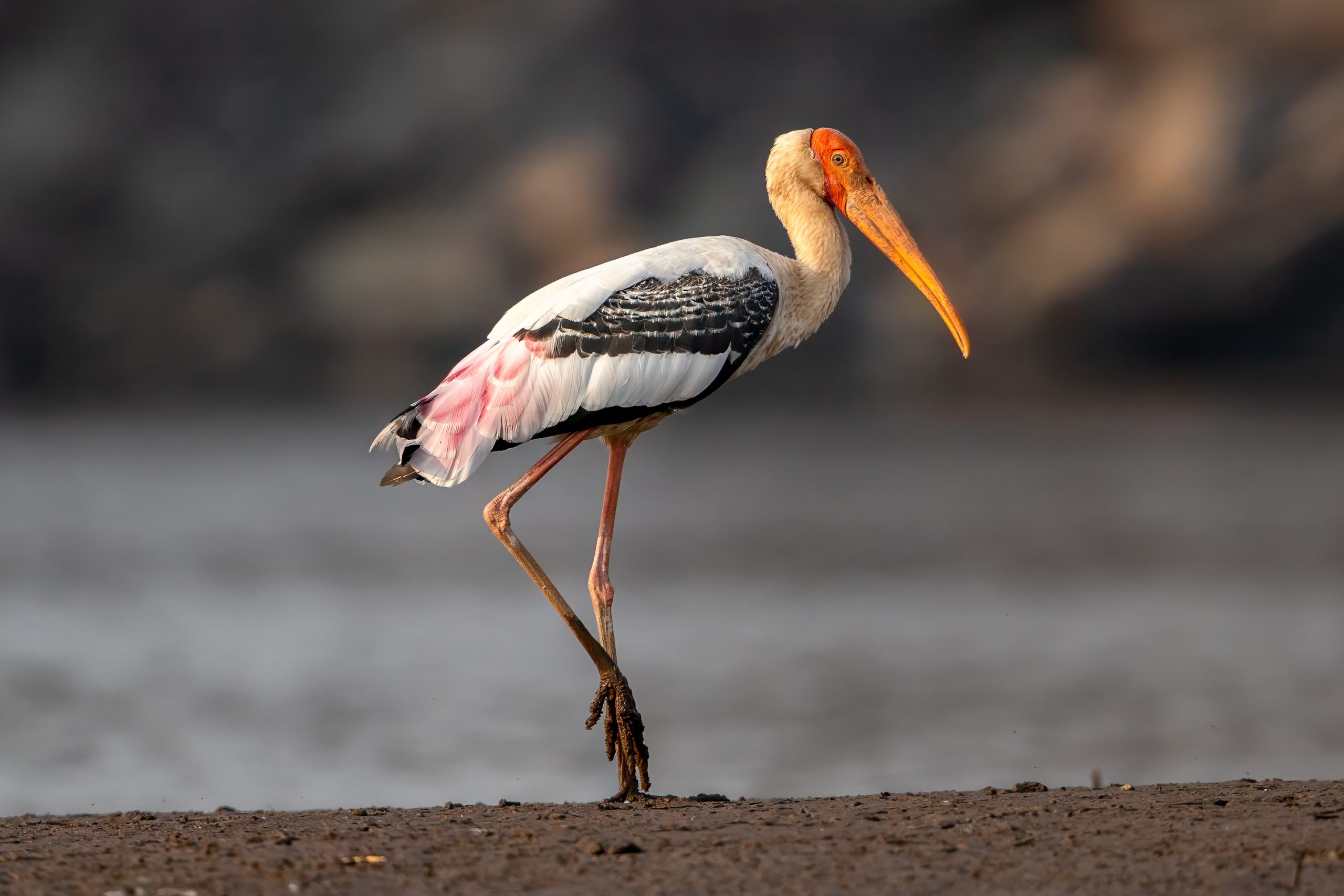Description
The saddle-billed stork (Ephippiorhynchus senegalensis), also known as the saddlebill, is an eye-catching wading bird found in sub-Saharan Africa, standing at an impressive height of up to 150 cm (59 inches) with a wingspan of 2.4 to 2.7 meters (7.9 to 8.9 feet). It is one of the tallest storks and uniquely silent, lacking the typical throat pouch for sound production. This stork is distinguished by its vibrant bill, red with a black band and a notable yellow frontal shield – the ‘saddle’. This bill serves not only as a striking feature but also aids in thermoregulation. Its plumage is predominantly black and white, with black covering the wings, back, and tail, and white elsewhere. Males and females are similar in appearance, but males can be identified by slightly darker eyes and a unique yellow wattle at the base of the bill.
Diet & Habitat
Saddle-billed storks inhabit diverse wetlands across sub-Saharan Africa, including marshes, riverbanks, and other shallow water bodies. Primarily piscivorous, the saddle-billed stork’s diet consists mainly of fish. However, it also consumes amphibians, small reptiles, insects, and occasionally small mammals and birds. They employ a patient hunting strategy, standing still or moving slowly in shallow waters before quickly snatching prey with their bill.
Breeding & Nesting
Breeding season can vary, but the saddle-billed stork often breed during the dry season, as this timing helps ensure that water levels are lower, making it easier for them to access prey to feed their chicks. In East Africa, for instance, the breeding season usually coincides with the dry season, which can be around July to October, while in Southern Africa, the breeding season tends to be from June to November. This timing can shift slightly based on local environmental conditions and climate variations.
The saddle-billed stork is a monogamous and solitary nester, often found in pairs rather than large colonies and will often return to the same nesting site year after year. Their nests are large and constructed high in trees, usually near water. The female typically lays one or two eggs, and both parents share the responsibilities of incubation. Post-hatching, both parents participate in feeding the chicks, who fledge after about 70 to 100 days.
Status
The saddle-billed stork faces threats from habitat destruction and disturbance, especially due to human activities. Efforts to preserve wetland habitats are crucial for the survival of this species. Even so, due to its widespread distribution and large population, it is still listed as least concern on IUCN Red list.









